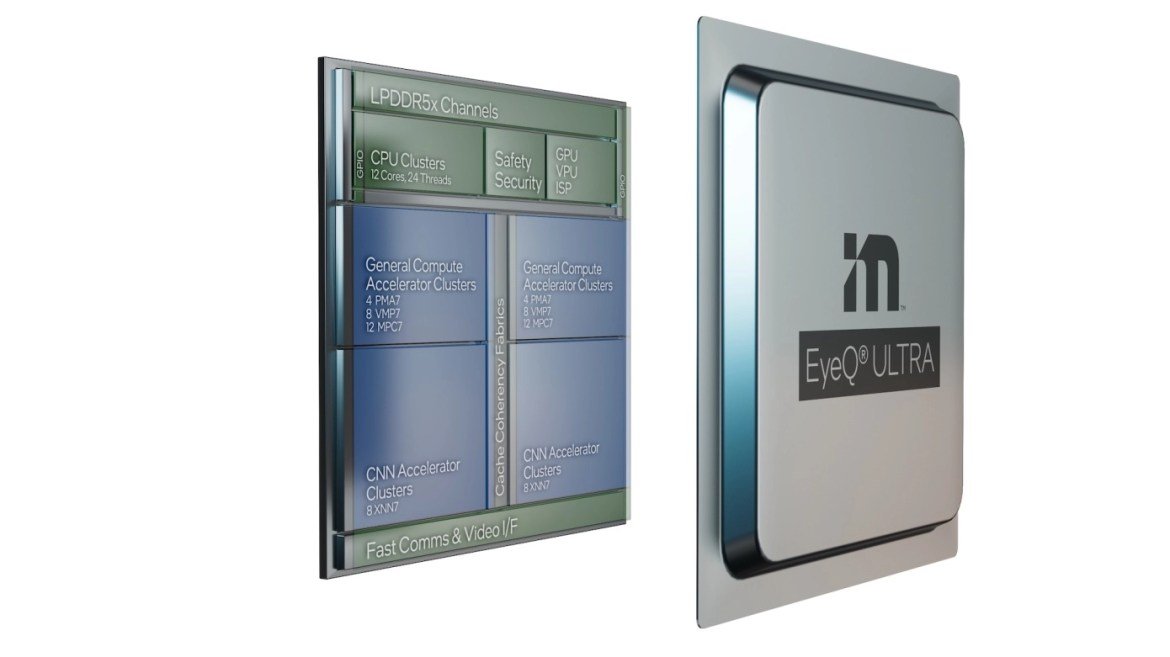CES, one of the biggest technology events in the world, hosted the new chips of Intel’s Mobileye company. The EyeQ Ultra chip, specially designed for autonomous driving by Mobileye, draws attention with its high performance.
Mobileye EyeQ Ultra, which is stated to be used in passenger and commercial vehicles, can perform 176 trillion transactions per second (TOPS). Announcing that the first silicon production will be carried out at the end of 2023, the company will appear with automobile class production in 2025.
The EyeQ Ultra chip introduced by Intel Mobileye has high performance
The company also introduced the new generation EyeQ chip-based system for advanced driver assistance systems called EyeQ6L and EyeQ6H. Designed to support Level 2 autonomous driving technology, the EyeQ6L will begin production in mid-2023. The EyeQ6H model, which will not go into production until 2024, will also support ADAS and Level 2 autonomous driving.

EyeQ6H, which has higher performance than EyeQ6L, will be able to realize all advanced driving aid functions and image processing with multi-camera. The EyeQ6H will also host third-party applications such as parking visualization and driver monitoring.
Known for providing computer vision technology that powers advanced driver assistance systems, Mobileyes released its first EyeQ chip in 2004. The developed EyeQ chip was used in vehicles for collision avoidance.
Mobileye, which has shipped its 100 millionth EyeQ chip since the end of last year, continues to grow rapidly. In 2018, Mobileye expanded its focus beyond just a supplier to a robotaxis operator.
Mobileye’s REM mapping system processes data by leveraging EyeQ4-equipped fleet vehicles to create high-resolution maps that can be used to support ADAS and autonomous driving systems. Instead of video or images, this data is stored as compressed text that collects about 10 Kilobits per kilometer. Informing the development of this new EyeQ Ultra chip, the mapping technology provides access via the cloud to provide up-to-date information about roads in real time.
ShiftDelete to be aware of the remarkable technologies at the CES 2022 event. You can follow the Net YouTube channel.